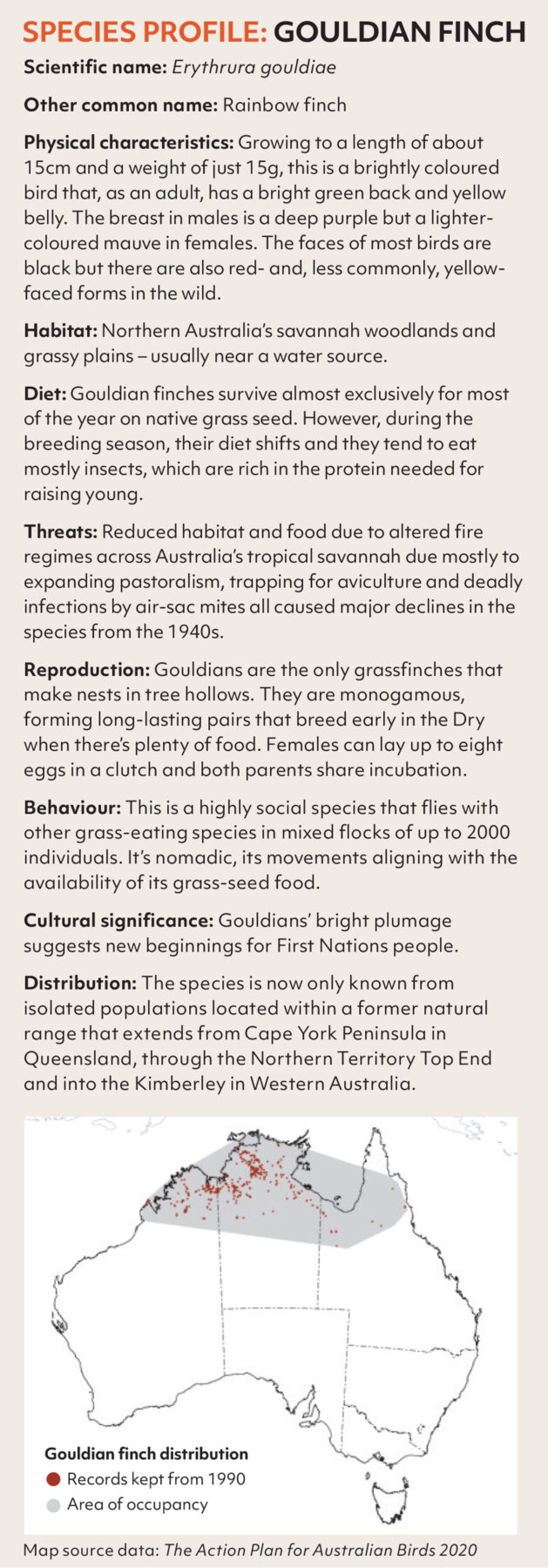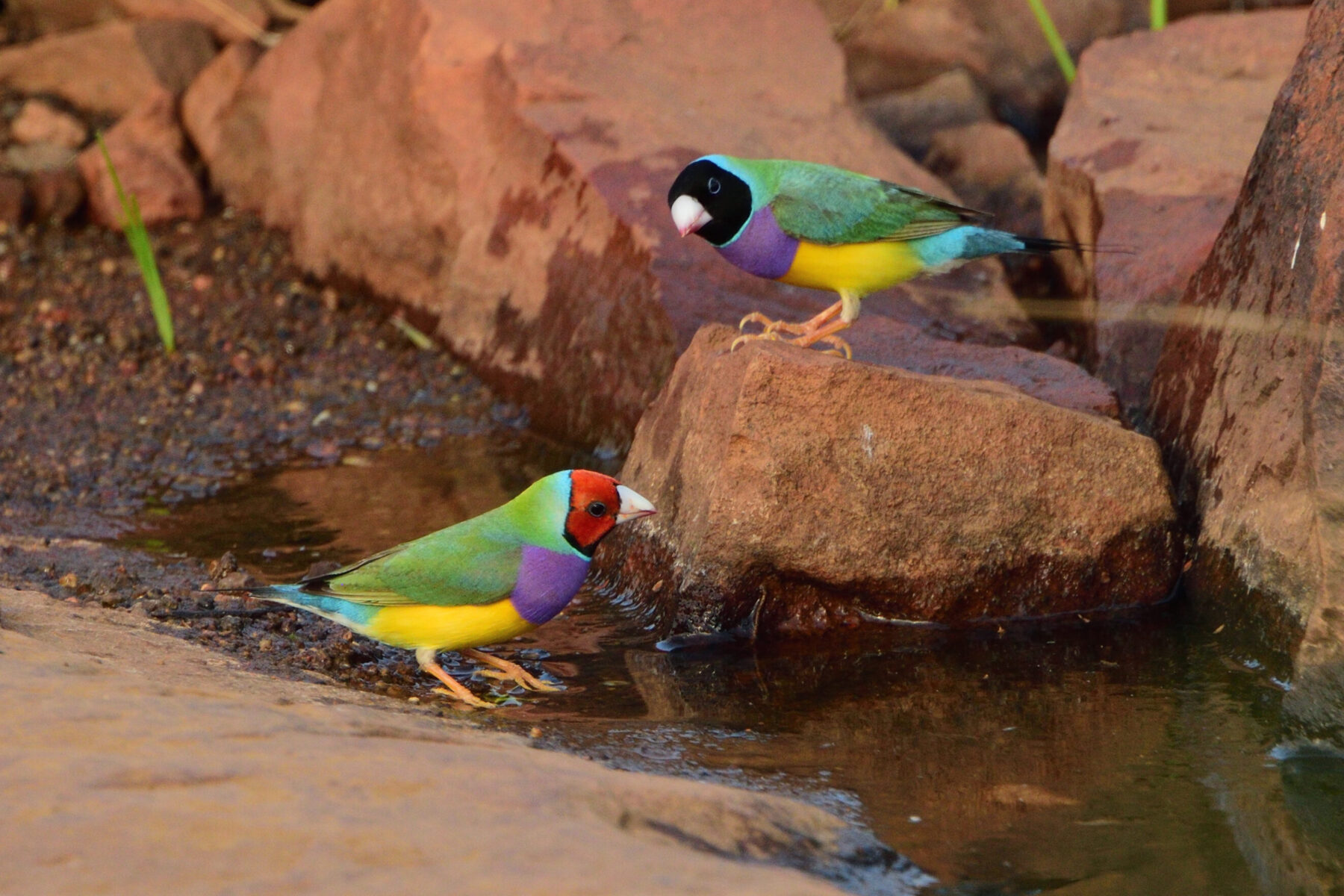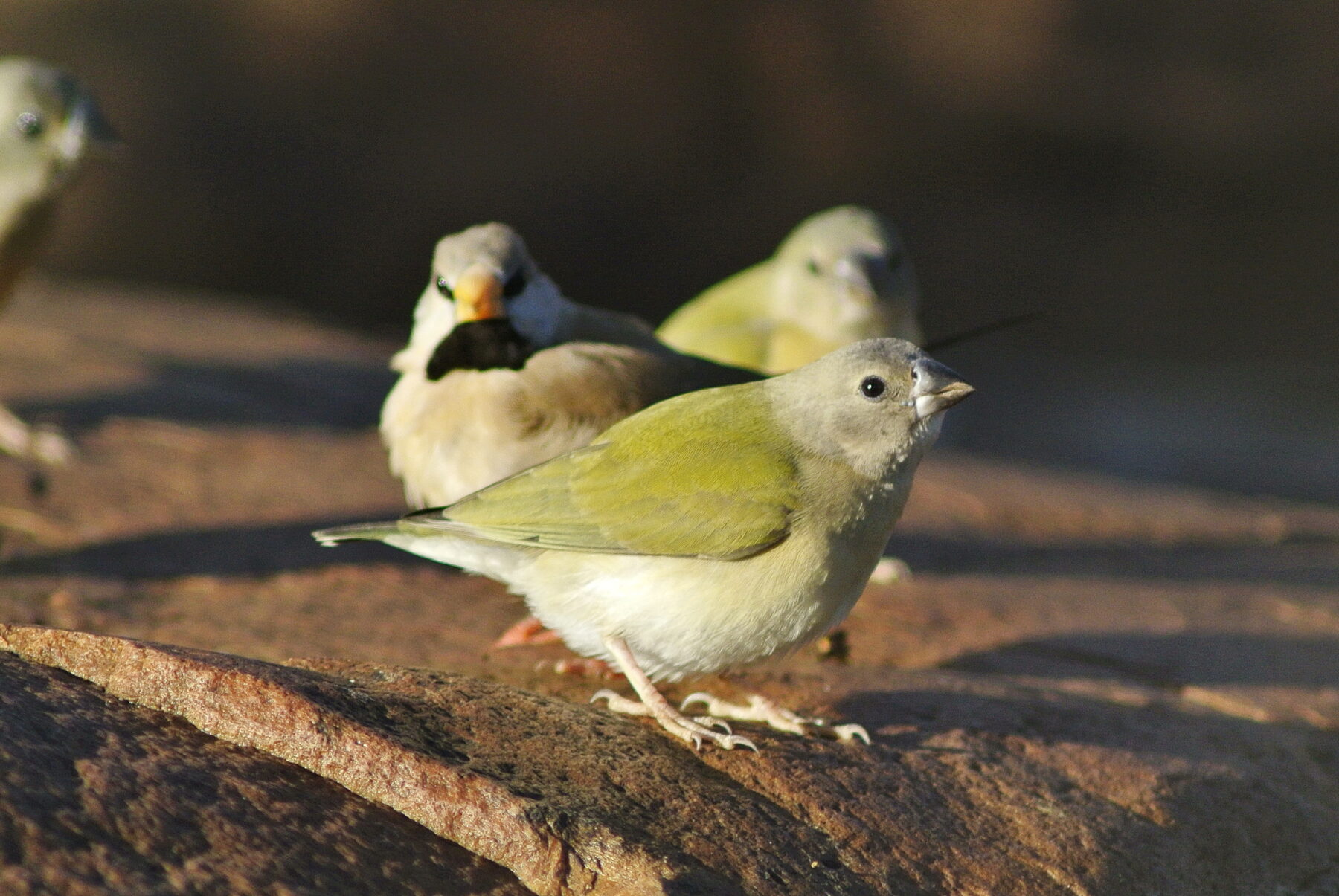Records suggest large flocks of Gouldian finch (Erythrura gouldiae) including many hundreds – possibly thousands – of individual birds, were common across northern Australia’s savannah grasslands in the late 1800s, before pastoralism and collecting the species began having an impact. Little than a century later, this exquisite species – arguably the world’s most beautiful bird – was en route to disappearing forever from the wild.

“It was probably on a trajectory to extinction by the 1980s,” says Dr Alexander Watson, a regional ecologist at Australian Wildlife Conservancy (AWC). “In the late ’90s and early 2000s, people became very concerned about losing the Gouldian finch from the wild forever.” At the time, the species faced several significant threats, including a respiratory parasite that had become prevalent in Gouldians kept in aviaries and had spread to the wild population.
But historically, the species had already suffered huge declines because of high demands among bird collectors worldwide. The capturing and exporting of Gouldians began in earnest from 1897, when finch trapping started in the Kimberley region of Western Australia. The Gouldian finch was the most in-demand of almost a dozen native northern Australian finch species and thousands were trapped annually and sent offshore to the aviaries of bird collectors. The trade peaked in 1958, when more
than 38,000 finches were trapped – mostly for export – including 11,000 Gouldians.
The practice was stamped out in the early 1980s, but figures from the last legal trapping season reveal the impact it had on the Gouldian population. In WA’s 1981 finch-trapping season, records show 23,450 finches were taken, of which just 1054 were Gouldians. Trapping these birds has been illegal ever since and Gouldians now breed so well in captivity there’s little demand these days for wild-trapped birds. In fact, you’d think you could gather together the world’s thousands of caged specimens, release them in northern Australia and the species’ decline would be resolved. But these finches lose their innate response to avoid predators after a few generations behind bars. Captive birds released in the wild are rapidly picked off by goshawks, kites, crows and other winged predators.
Importance of fire
It wasn’t only trapping that brought the species close to the brink, with widespread reports of local extinctions notably in Queensland. The Gouldian was just one of several bird and mammal species reliant on native grass to disappear from the country’s tropical savannahs due to habitat change caused by cattle grazing and altered fire regimes. These included the Carpentarian rock-rat, the Carpentarian grasswren and the partridge pigeon.
Cattle graze on the grasses that produce the seeds these species eat, and the way stock grazes also restricts regrowth of a variety of grasses important to the survival of entire ecosystems, not just birds and mammals. The introduction of non-native pasture plants that out-compete endemic grasses further reduces native seed availability.

But the biggest impacts have been wreaked by fire. Fire is recognised as a natural phenomenon that’s helped shape biodiversity in the continent’s north. It has also been used for millennia as a land management tool by First Nations people, who ignited small fires at different times of the year, leaving the grasslands like a patchy mosaic.
As a result, the very hot, very destructive fires of the late Dry, sparked mostly by lightning strikes, burnt over relatively small areas.
By the late 20th century, however, the fire regimes adopted by many land managers in the grasslands weren’t achieving the same patchiness. As a result, fires of the late Dry, fuelled by hot, dry trade winds from the south-east, often took out many thousands of hectares at a time. This decimated the resources necessary to sustain many birds and animals, including Gouldians, during a particularly stressful time of the year.
In recent decades, however, there have been vast improvements in land management across Australia’s tropical grasslands. This, combined with the ban on trapping, is thought to have led to Gouldian numbers bouncing back.
Dealing with widespread starvation
It doesn’t mean, however, the species is secure. “It’s certainly still a rare bird in Queensland,” Alexander says. And that’s where much of AWC’s work is now focused for the species’ recovery. “We’re working anywhere we can to re-establish appropriate fire regimes and native perennial grasslands.”
It’s believed Queensland’s Gouldians are, in fact, still being so heavily affected by cattle grazing in the state’s north that there is widespread starvation among the birds during the beginning of the Wet. “So in terms of a conservation action, we feel we need to maximise the amount of grass diversity, as well as improve fire management,” Alexander says, pointing out that what’s good for Gouldians in terms of habitat recovery is also good for a suite of other species. “What we are arguing is that if you have healthy populations of Gouldian finches, you’ll have healthy populations of everything else that requires those seeds.”

And that includes other northern Queensland grassland species that have also been showing decline, such as partridge pigeons and many native rodent species. “So what we do with Gouldians now is to closely monitor where they are on our [northern Australian] sanctuaries as indicators of how a suite of other threatened grassland species will be doing,” Alexander says. And by rehabilitating grasslands through revegetation and better fire management it supports not only the recovery of Gouldian finches but so many other threatened species. “When you see Gouldians returning, you can confidently assume things are going well in terms of grassland management.”
Help save the Gouldian finch
Please help save the Gouldian finch by donating to the Australian Geographic Society’s Australia’s Most Endangered campaign.


